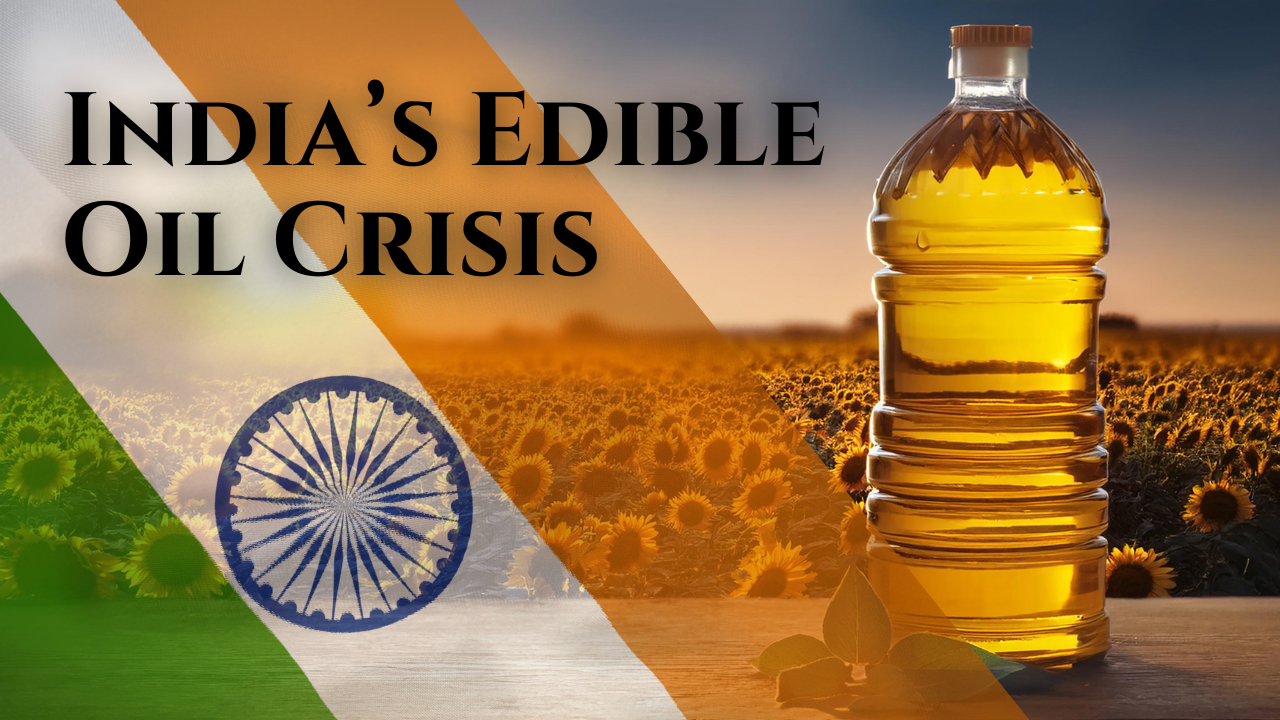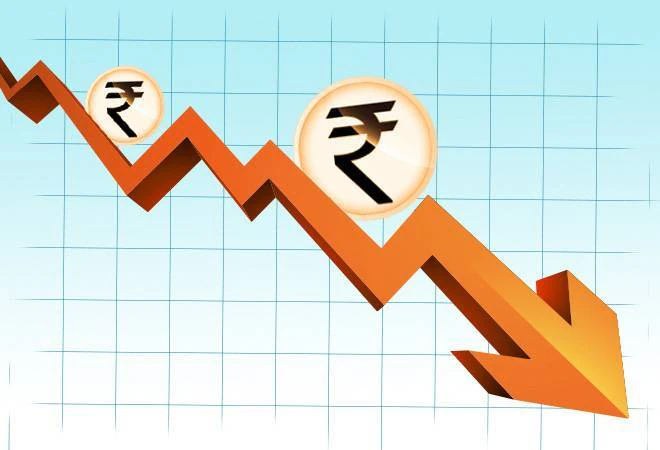India’s Edible Oil Crisis: Challenges and the Path to Self-Sufficiency
Introduction – India’s Edible Oil Crisis
India, one of the largest consumers of edible oil, is facing a major crisis in its cooking oil sector. Despite being an agricultural powerhouse, the country imports nearly 65% of its edible oil needs, making it highly vulnerable to international price changes. While some farmers have benefited from good soybean yields, most struggle with low productivity and unprofitable oilseed farming. This has led to growing farmer disinterest and a preference for other, more lucrative crops like paddy and corn. The government has taken steps to promote domestic production, but progress has been slow. This essay explores the key challenges causing India’s edible oil crisis and examines possible solutions.
The Farmer’s Struggle: Why Oilseed Farming is Losing Appeal
One of the biggest reasons for India’s edible oil crisis is the low productivity of oilseed farming. Compared to countries like Brazil, where farmers produce 154% more soybeans per hectare, India’s oilseed yields are poor. This makes it difficult for Indian farmers to compete globally.
Even when the government offers a minimum support price (MSP), market prices often drop below this level. As a result, farmers do not find oilseed farming profitable. Many, like those in Madhya Pradesh, are shifting to other crops like paddy and corn, which give better returns. This shift reduces the area under oilseed cultivation, further increasing India’s reliance on imports.
To encourage oilseed farming, the government has introduced higher import duties and the National Mission on Edible Oils, a program to boost local production. However, these measures have not yet made a significant impact. Farmers still hesitate to grow oilseeds due to uncertain profits and fluctuating prices.
Import Dependency: A Risky Gamble
India depends heavily on imports to meet its cooking oil needs. Over 65% of the country’s edible oil demand is met by foreign suppliers, with palm oil making up more than half of these imports. This reliance on imports has major disadvantages:
- Price Volatility: Global edible oil prices fluctuate due to factors like bad weather, trade restrictions, and political crises. For example, the Russia-Ukraine war and Indonesia’s biofuel mandate led to a sharp rise in palm oil prices, making edible oils costlier in India. In December 2024, edible oil inflation reached 14.6%, up from just 2.5% in September. This affected not only household budgets but also industries like packaged food and soap manufacturing.
- Vulnerability to Global Disruptions: During the COVID-19 pandemic, edible oil prices increased by 66% in 2021 and another 14% in 2022. Since India does not produce enough oil domestically, it had no choice but to pay higher prices for imports. This puts a heavy burden on both consumers and the economy.
- Slow Progress in Domestic Production: The government has launched initiatives like the Oil Palm Mission, which promotes palm oil farming within India. However, palm oil trees take at least four years to produce oil and nine years to reach peak productivity. Current domestic production is less than half a million tonnes, compared to the 8-9 million tonnes India imports annually. This means that while palm oil farming is a good long-term solution, it will not solve India’s current edible oil crisis.
The Role of Technology and Policy
One of the major barriers to higher productivity in India’s edible oil sector is the lack of advanced agricultural technology. In many countries, genetically modified (GM) crops have helped boost oilseed yields. However, Indian farmers are not allowed to grow GM oilseeds due to regulatory restrictions.
For example, GM mustard (DMH-11), which can increase productivity by 25-30%, was approved by the government in 2022. However, a legal dispute in the Supreme Court has delayed its widespread use. Experts argue that India needs to embrace GM technology if it wants to increase oilseed production.
Additionally, India needs a major research and development program to develop better hybrid seeds for oilseeds like mustard and sunflower. The South Asia Biotechnology Centre has recommended stronger patent protections to encourage private companies to invest in seed technology.
Lessons from the Past: The 1980’s Success Story
India was not always dependent on imported edible oil. In the late 1980s, the government launched the Technology Mission on Oilseeds, which led to a 78% increase in domestic production. By 1992, the country was almost self-sufficient in edible oils. This period marked a significant achievement, proving that with the right policies, India could meet its own edible oil needs.
This success was made possible by three key factors. First, the government provided strong support to farmers, encouraging them to grow more oilseeds. Second, import restrictions were put in place, preventing cheap foreign oils from flooding the market and allowing local producers to thrive. Third, technological advancements helped improve crop yields, making oilseed farming more efficient and profitable for Indian farmers.
However, in the mid-1990s, the government relaxed trade rules, allowing large-scale edible oil imports. As a result, cheap foreign oils replaced local production, making it hard for Indian farmers to compete. The situation worsened in 1998, when a mustard oil adulteration scandal in Delhi led to 60 deaths. Consumers lost trust in traditional oils and shifted to refined imported oils, further reducing demand for Indian-produced oilseeds.
A 2024 Niti Aayog report found that unrestricted imports weakened India’s oilseed sector. While consumers benefited from lower prices, farmers struggled with low profits and stagnant yields. The report recommends a balanced approach—protecting farmers while ensuring affordable edible oil for consumers. To regain self-sufficiency, India must learn from its past successes and adopt smarter trade and farming policies.
The Path to Self-Sufficiency
To reduce its dependence on imports and become self-sufficient, India needs a strong and practical plan. First, increasing crop production with better technology is vital. This means investing in research for improved oilseed varieties, allowing genetically modified (GM) mustard, and giving farmers access to modern irrigation and better farming methods. These changes can help farmers grow more oilseeds, making India less reliant on imports.
Second, oilseed farming must be made more profitable. The government should ensure fair prices by raising the minimum support price (MSP), provide financial help to farmers, and improve storage and processing facilities to prevent waste. If oilseeds become a more attractive option, farmers will be less likely to switch to other, more profitable crops like paddy and corn.
Growing oil palm in a sustainable way could also help cut down imports. Although oil palm trees take years to produce oil, long-term support for farmers can make it a useful option. However, care must be taken to protect forests and manage water use properly.
Finally, India needs a smart trade policy. Increasing import taxes can help local farmers, while keeping reserves and making fair trade deals can stop prices from rising too much. By taking these steps together, India can work towards self-sufficiency in edible oils, securing a better future for both farmers and consumers.
Conclusion
India’s edible oil crisis is a result of low productivity, declining farmer interest, and excessive reliance on imports. While the government has introduced initiatives like the National Mission on Edible Oils, progress has been slow. The lessons from India’s past success in the 1980s show that a combination of farmer support, technology adoption, and policy reforms can help achieve self-sufficiency.
For India to reduce its dependence on imports, it must invest in advanced technology, support farmers financially, and create a balanced trade policy. Only then can the country ensure a stable and affordable supply of cooking oil for its growing population. Until these changes are implemented.
Subscribe to our Youtube Channel for more Valuable Content – TheStudyias
Download the App to Subscribe to our Courses – Thestudyias
The Source’s Authority and Ownership of the Article is Claimed By THE STUDY IAS BY MANIKANT SINGH



